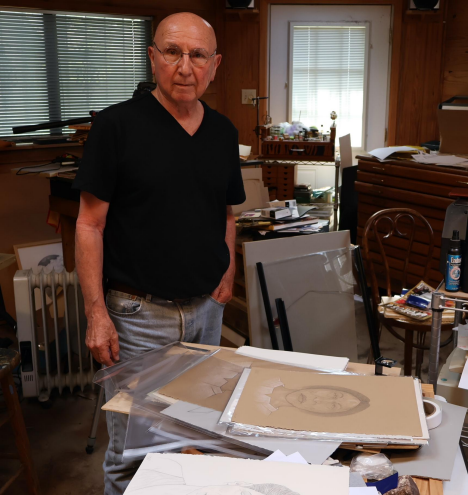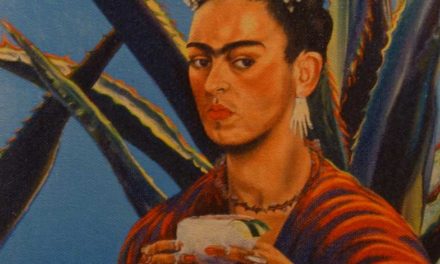Courtesy of ruizhealyart.com
Martínez was born in Laredo, Texas, and graduated from Texas A&I University, Kingsville in 1968. He now lives and works in San Antonio, Texas. A major figure in the Chicano Art Movement of the late 1970s and 1980s, Martínez’s portraits are icons of Mexican American art history. Deeply rooted in his native South Texas and its Mexican American culture, Martínez’s work reflects a broad knowledge of the western art canon and finds inspiration from color-field paintings, Mexican architecture, and photography. Martínez is drawn to the way in which Mexican American family photographs served as intimate, personal portraits, during a time when only white individuals or groups were being iconized in paintings. Martínez offsets his melancholic subjects against a vibrant palette of clothes in tension against abstract backgrounds. The individuals in Martínez’s works are merely hybrids derived and elaborated from many different photographs found in high school yearbooks, obituaries, newspapers, and other public sources. Martínez explains “The idea of a very frontal, and very emotionless, almost expressionless face just staring at you, came from Richard Avedon’s work.”
The background in his paintings is like an upright wall layered with vibrant colors that are often seen in traditional Mexican architecture as well as in the more modern works of Mexican architects like Luis Barragan and Ricardo Legorreta. In Mexican architecture, as in Martínez’s pieces, the louder the colors the more powerful the statement. Now, instead of a skyline, the upper horizontal band of color can be seen as an elevated tier of paint functioning architecturally to distinguish the top frieze from the lower main part of the building. “I’ve never really done art that I would say is political. But I think the kind of art that becomes politicized, as in my case and in many of my contemporaries, is simply because it had a Chicano perspective or Chicano imagery. The Chicano Movement was such an overpowering thing that I couldn’t help but become associated with it. The Chicano Movement was a renaissance in thinking about us and in creating those institutions and images and writings that reflected who we are. They were non-existent at that time, we had nothing to relate to, so we had to make it up as we went along. And that was the road to a deeper understanding of who we are.” – César A. Martínez.
Martínez’s work has been included in landmark exhibits like Hispanic Art in the United States: Thirty Contemporary Painters & Sculptors; La Frontera/The Border: Art About the Mexican/U.S. Border Experience; and Chicano Art: Resistance and Affirmation 1965-1985. He was honored with a solo exhibition, and accompanying book, at the McNay Art Museum, San Antonio, Texas in 2009. His work has been exhibited and is part of the permanent collection of institutions like the Smithsonian American Art Museum, Washington, DC.; Brooklyn Art Museum, Brooklyn, NY; Museo de Arte Moderno, Mexico City; LACMA, Los Angeles, CA; the Museum of Fine Arts, Houston and the Mexican Fine Arts Center Museum, Chicago, IL.
Photo Caption: Cesar Martinez with La Malinche drawing. Photo by Ricardo Romo,May 18, 2023.
Read More About the Artist on Page 10.











Cesar Martinez is one of our most important Chicano Artist that will be leaving a footprint of Chicano Art for our future generation.